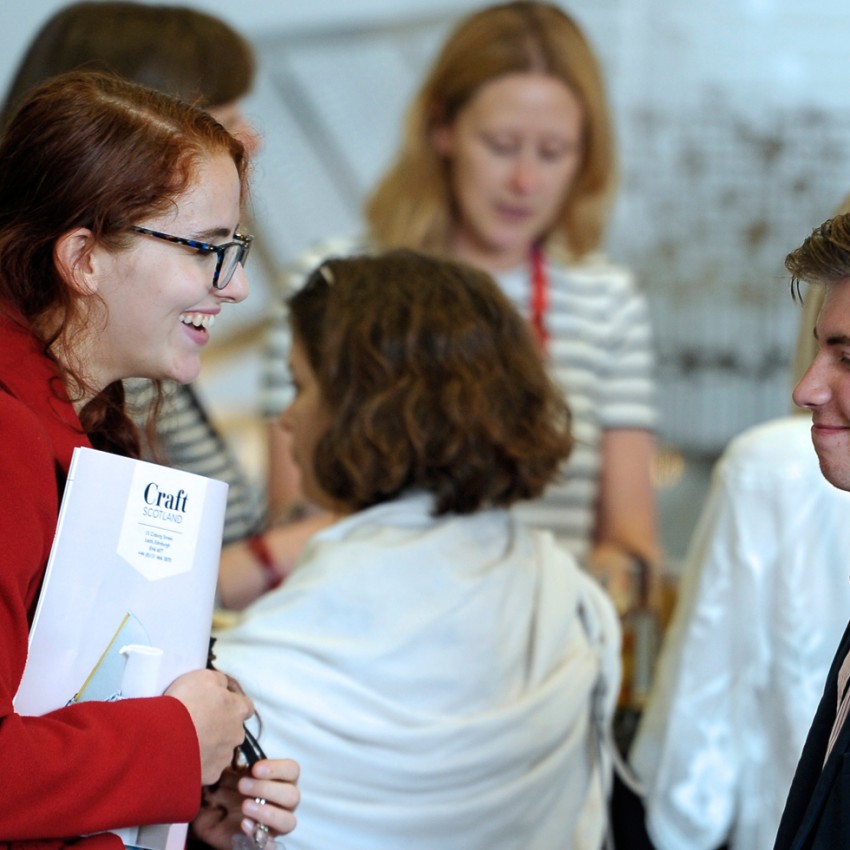This is a common question, and one which is hard to answer as the definition is constantly evolving.
For many, craft involves the hands of a maker. Whilst this is true, there are many types of craft businesses in Scotland from individual makers to small-batch producers to larger-scale companies. The thread that connects all of these craft businesses is that the design and mastery of materials belongs with the maker and any batch production is under their direct supervision. Craft pieces should showcase the unique vision of its maker and not be derivative.
Craft Scotland champions work that is technically excellent, meaning that it is well designed and skilfully made: ensuring the piece can fulfil its function. We look for a uniqueness of idea, with each piece an expression of the maker’s skill and creativity.
Craft Scotland supports makers who are living and working in Scotland. The work should be designed in Scotland, however the production can be elsewhere as long as this is clearly stated and the maker’s work fits the criteria above. Through our Green Crafts Initiative with Creative Carbon Scotland we encourage our makers to be ethical and sustainable in their practice.
What do you support?
Craft Scotland promotes a wide range of craft, including makers who are using traditional and cutting-edge techniques across diverse practices. We currently support:
- Basketry & Willow Weaving
- Bookbinding
- Ceramics
- Furniture Making (furniture and lighting)
- Glass Working
- Jewellery
- Leather Working
- Metal Working (blacksmithing and large-scale work)
- Millinery
- Mosaics
- Paper Making (paperworks and wallpaper, this does not include stationery)
- Silversmithing & Goldsmithing
- Stone Working (carving, lettering, sculpture, plasterwork)
- Textiles (weaving, knitting, crochet, printed, embroidery, tapestry, felting, quilting, tufting and lace)
- Wood Working
Due to our funding remit, Craft Scotland does not represent; fine art, painting, drawing, photography, printing on paper, stationery, taxidermy, candle, soap or cake making, nor jewellery made by assembling bought-in materials. However, Craft Scotland supports the work of makers who incorporate non-craft disciplines into their craft practice: for instance photographic transfers on handmade ceramics, or painting onto blown glass. We regularly review our representation based on feedback from makers and artisans, and new methods of making.
How do you decide on what is quality?
Whilst the Craft Scotland Board and team are experienced and knowledgeable, we also seek expert and informed opinions from tastemakers, collectors and the wider craft sector ensuring a wide range of opinions.
For events and exhibitions, we put out an open-call for applicants. All the applications are then reviewed against set criteria by a selection panel. The panel is typically made up of industry professionals such as curators and producers. For our Craft Directory we have a submission policy and shortlisted applicants are reviewed by an independent panel.
We also seek opinions from external groups, the primary one being our Advisory Group that has no governance responsibility for Craft Scotland and is comprised of makers from across Scotland practicing in different disciplines. This group was set up to advise the Board and comment on the quality and appropriateness of current programmes and future activities.


